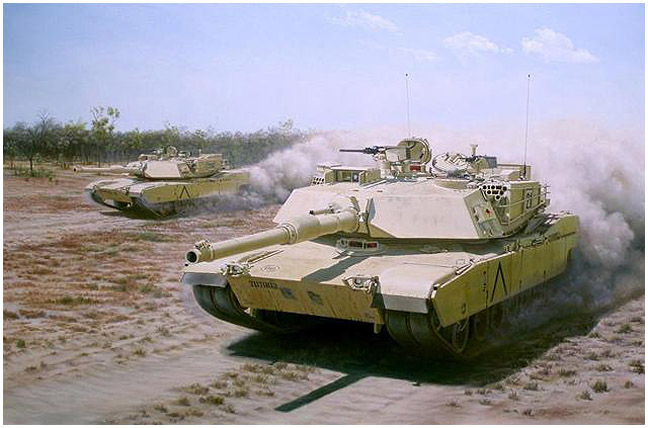

Noting that the M60 Patton cost only $500,000 each, Aspin said, "I'm sure that the Army's new tank is not twice as good as what we have today." Aspin argued that were the research and development costs factored in, tanks would actually cost over $900,000 a piece (compared to $1.3 million for the canceled MBT-70). The Pentagon had projected unit costs were to be less than US$507,000 in 1972 dollars. The price of the $3 billion program was assailed by Congressman Les Aspin in July. By 1973 the Army had settled on buying 3,312 of the new tanks, with production beginning in 1980. Plans called for a tank weighing about 54 tons. The Pentagon's requirements specified a tank gun between 105 and 120-mm and a Bushmaster cannon with a caliber between 20 and 30-mm. Desobry told The New York Times, "We ought to be shot if it doesn't work." By April the Pentagon approved the project with Brigadier General Robert.

A Pentagon task force submitted requirements for the tank in January 1973. Army officials told congressmen in April that there was little that could be salvaged from the past efforts, and that a new tank would take at least eight years to develop. The Army restarted its M60 successor program with Major General William Robertson Desobry leading the team formulating requirements in March 1972.

Ĭongress canceled the MBT-70 in November and XM803 December 1971. This succeeded only in producing an expensive system with capabilities similar to the M60. As a result of the imminent failure of this project, the U.S. The MBT-70 was very ambitious, and had various innovative ideas that ultimately proved unsuccessful. The first attempt to replace the M60 Patton was the MBT-70, developed in partnership with West Germany in the 1960s and reaching the testing stage by 1968. Since then, it has gone through dozens of upgrades and been the baseline variant of several vehicles.ĭevelopment An XM1 Abrams during a demonstration at Fort Knox, Kentucky, in 1979 The M1 Abrams main battle tank has been in service since 1980.


 0 kommentar(er)
0 kommentar(er)
